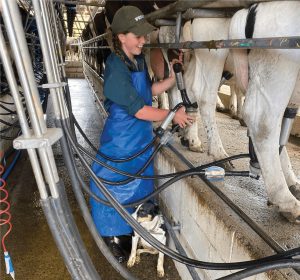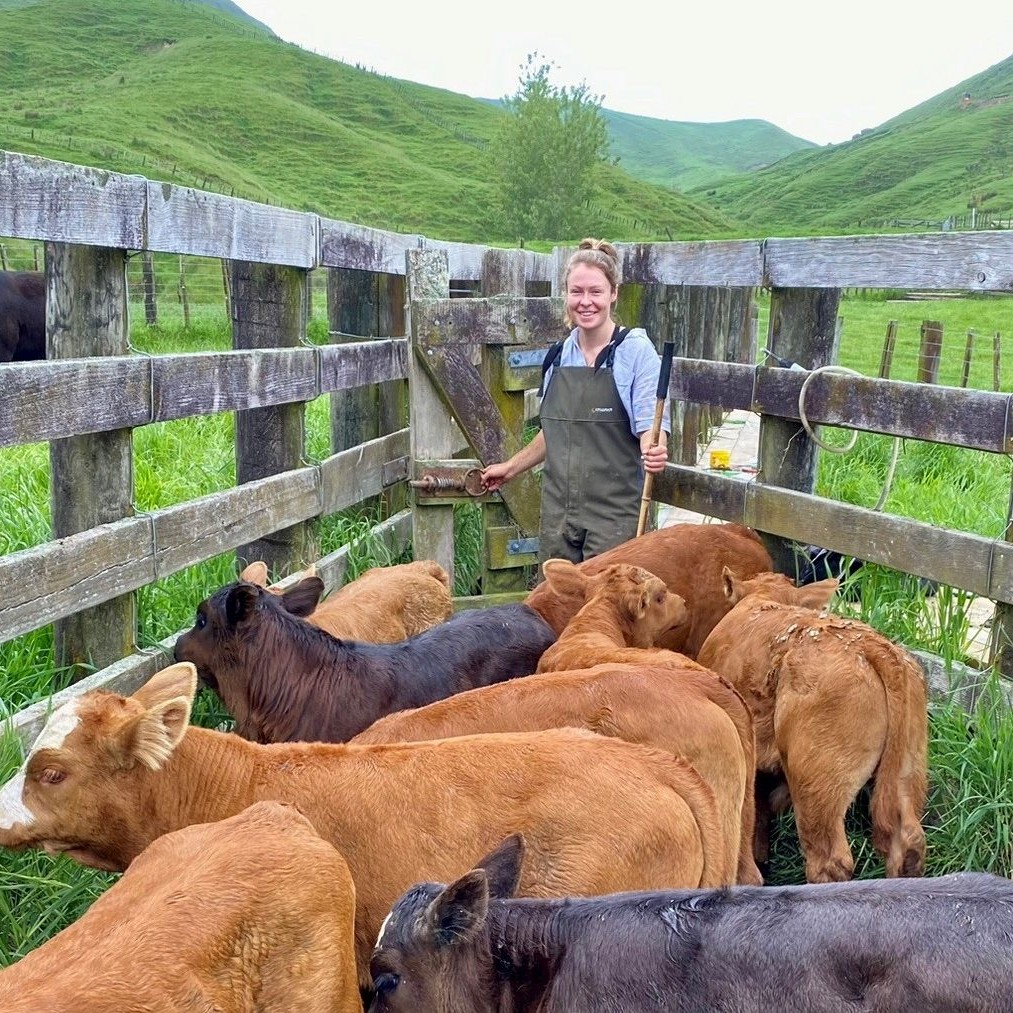She had heard about it before, but passed it up. Now Alex Lond is a convert to the Max T method.
Everybody’s talking about it – and I just couldn’t get my head around it. The Max T (maximum milking time) method is becoming more and more popular in and around the Waikato, and I wanted to know why?
After hearing about it from a friend after he won Sharemilker of the Year back in 2018, I somewhat dismissed it as an idea only needed by farmers who didn’t enjoy milking their cows. However, after attending a discussion group last week with a focus on executing the Max T method in herringbone sheds, I have seen it in a whole new light.
I have always enjoyed milking, seeing it as an opportunity to plan my day in the mornings (in my head) and as the final job for the day (most of the time). I am fortunate that milking is not a long, drawn-out affair on my farm. I milk 350 cows through a 29ASHB shed, with recently installed in-shed feeding meaning that the cow flow is always excellent, both in and out of the shed, and the longest milking time this season has been 3 ½ hours from cups-on to taking my boots off for breakfast.
I have also never (knowingly) had a problem with staff not enjoying milking, and the cows always seem chilled and happy in and out of the shed. So, don’t fix what isn’t broke, right?
But then who doesn’t want to milk as efficiently as they can? Before attending, I thought Max T meant not milking out your slow milkers, in an attempt to ‘train’ them to milk out as fast as the quickest cow in the herd. So, I thought that once you’ve finished cupping one row, you’d go back to the front and if the first cow was finished, you’d start cupping the next row and not stop for any slow milkers on the way.
I have also never (knowingly) had a problem with staff not enjoying milking, and the cows always seem chilled and happy in and out of the shed. So, don’t fix what isn’t broke, right?

Well, it is in fact much more complicated and well thought out than this.
Max T means everything has a set rhythm that can be implemented from the start of milking and is the same for all staff: you literally set a timer at the beginning of each row, cupping all the way down without stopping but then not starting the next row until your ‘time’ is up, with any spare time being used for more efficient teat spraying/hosing.
The argument is that you are saving time by keeping this regular rhythm rather than waiting on slow milkers and the cows are much happier because just like us humans, they love regularity.
Some of my frustrations with new staff or relief milkers are often unnecessary, pernickety things that only I really notice, so I repeatedly just let it bubble inside of me rather than scare them away with my pickiness.
With the Max T method, most of these things would disappear: you could introduce all the facts from the start on how the shed runs, and everyone will be doing it the same way because that’s how it must be done for Max T to be effective.
So am I a convert? Not just yet, but watch this space. In an ever-changing industry with new challenges presented to us every day it’s great to see so many farmers willing to adapt so that they can further improve the lives of both their staff and their cows.




